Washing powder without phosphates and surfactants
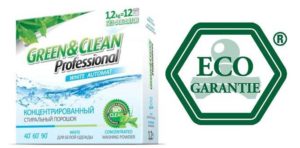 The composition of modern washing powders is sometimes simply frightening with its numerous components. Many of these substances are not even known to the average person, and therefore doubt arises as to whether they are safe for humans. Phosphates and peahens are among the most discussed today. What are these substances, what are their benefits and harms, and most importantly, which powders do not contain these substances, that’s what we decided to write about.
The composition of modern washing powders is sometimes simply frightening with its numerous components. Many of these substances are not even known to the average person, and therefore doubt arises as to whether they are safe for humans. Phosphates and peahens are among the most discussed today. What are these substances, what are their benefits and harms, and most importantly, which powders do not contain these substances, that’s what we decided to write about.
Phosphates and surfactants: what are they?
In advertising of washing powders, words such as surfactants, phosphates, phosphonates, zeolites, etc. are constantly used. No less often you can hear phrases that surfactants and phosphates are very harmful and the less the powder contains, the better. What does all this mean? First, let's look at the categorical apparatus.
- Surfactants are active substances that, on the one hand, accelerate the dissolution of chemicals in water, and on the other, allow molecules of fat, paint and other insoluble or poorly soluble components to bind to water molecules and be washed out of the fabric. Surfactants are the basis for the effectiveness of washing powder.
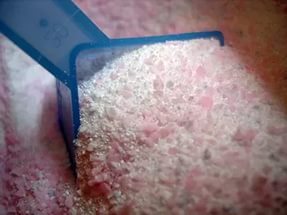
- Phosphates are phosphorus salts that dissolve well in water. They will not cause significant harm to humans, but they cause irreparable harm to the environment. The main task of phosphates is to make water softer, which means to enhance the cleaning effect of the powder.
- Phosphonates are substances (esters) that replace phosphates in laundry detergent. Some powder manufacturers have abandoned phosphates, since they are clearly harmful to the environment, and phosphonates are not so dangerous, which means their use is preferable.
- Zeolites are sodium aluminosilicates that are quite dangerous to human health because they deprive the skin of its protective fat layer and cause allergies. Zeolites are considered to be the most environmentally friendly replacement for phosphates, but in fact, people pay for this environmental friendliness with their own health. Zeolites cause obvious harm to human health.
Zeolites are a more expensive and more hazardous to human health replacement for phosphates. In those countries where phosphates in powders are prohibited, manufacturers are forced to replace them with zeolites, but there is nothing good about this.
In percentage terms, the above chemicals can be distributed in the powder differently, everything will depend on the integrity of the manufacturer. When the surfactant content in the powder ranges from 5-20%, the product is considered relatively safe. If the surfactant content exceeds 30%, the product is considered quite dangerous. There are quite a lot of phosphates in washing powders, up to 50% of the total volume, however, if at least half of the phosphates are replaced with phosphonates, this makes the powder much safer. And finally, zeolites can occupy up to 1/3 of the total volume of the powder, making the powder extremely toxic and dangerous.
What is the harm of these components and how to reduce it?
In general terms, it is clear that all of the above components in one form or another cause harm to the human body, but what exactly is this harm expressed in? Let's start with surfactants. Surfactants are harmful to the human body, with the exception of surfactants of plant origin, since they, when they come into contact with human skin in sufficient quantities, destroy the protective fatty layer of the skin. The skin of the arms, torso, legs and face, having lost its natural protective layer, begins to dry out, dermatological diseases occur, and immunity decreases.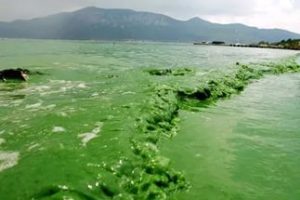
Human skin treated with surfactants ceases to be a reliable barrier to bacteria and viruses, as a result, the risk of getting sick increases by 2.5 times. The harm is obvious. Phosphates do not cause any significant harm to the human body, unless, of course, you decide to drink the water left after washing. But phosphates cause enormous harm to the environment. The fact is that phosphates do not decompose in an aquatic environment. It is also difficult to purify water from phosphates and they eventually end up in water bodies.
What happens next? Phosphates entering a natural body of water accumulate there over time, stimulating the growth and development of gray-green algae. Algae fill the pond, quickly turning it into a swamp. And so, a couple of decades pass and in place of a large clean lake, an equally large, fetid swamp “shows off”.
It is possible to reduce the damage from the above chemicals by limiting their use, but it will not be possible to completely remove them, since there is no adequate and cheap enough replacement, and what does exist cannot be criticized.
Phosphate-free powders
You can buy washing powder that does not contain phosphates and surfactants at a large household chemicals store. The manufacturers of some of these powders are familiar to many young mothers. Such well-known brands as Ariel, Tide, Myth, Persil do not belong to them. You can see for yourself by reading the ingredients on the packaging. We offer a list of safe powders:
Sodasan Ecologocal Color is a washing powder from Germany, which contains natural herbal soap, citric acid, minerals, and essential oil. It contains no components of animal origin. This product has several certificates confirming the safety of the powder and its compliance with European standards. The price for a 1.2 kg package is about $5.
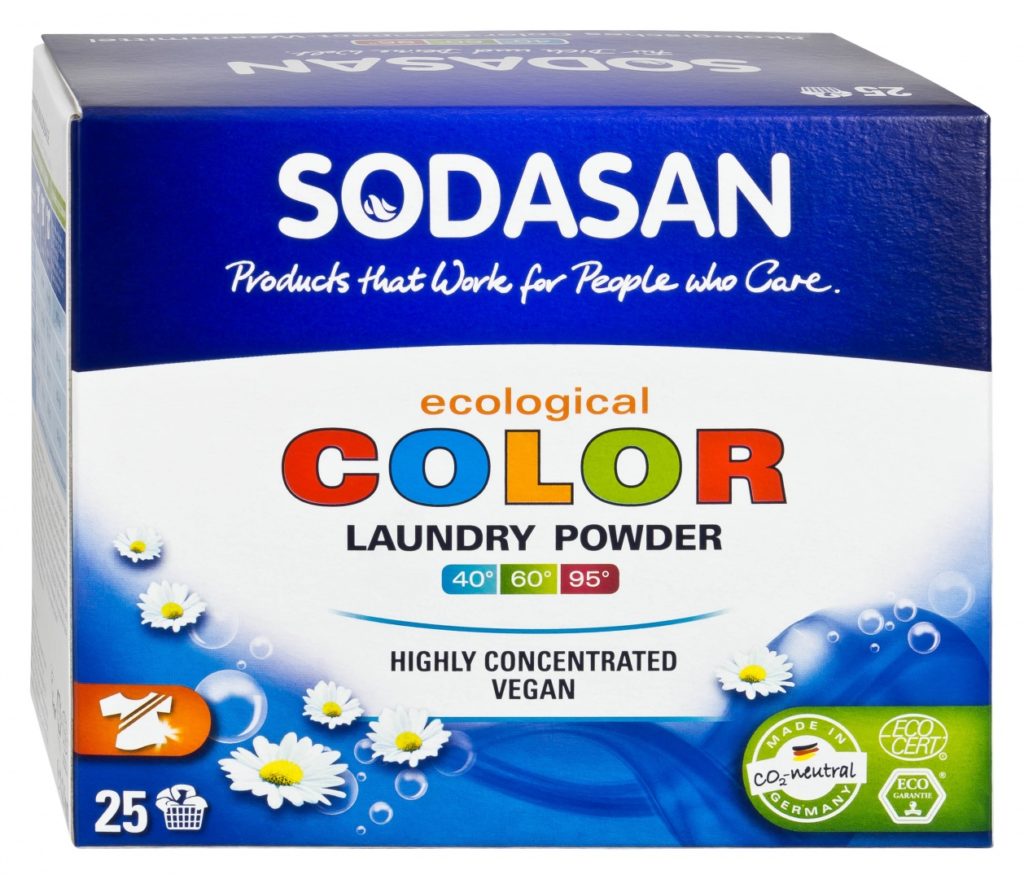
BIOMIO Color – powder for washing colored laundry, suitable for automatic washing machines. The product is produced in Germany. There are no phosphates in this powder, but there are zeolites, which, as it turns out, are no less dangerous, there are also polycarboxylates based on palm oil, cotton extract, surfactants, and cotton extract. The composition is more or less harmless. However, it is not recommended to wash wool items with this powder, since the enzymes will destroy the composition of the fabric fibers. According to the manufacturer, a 1.5 kg pack is enough for at least 30 automatic machine washes. A package costs about $5.
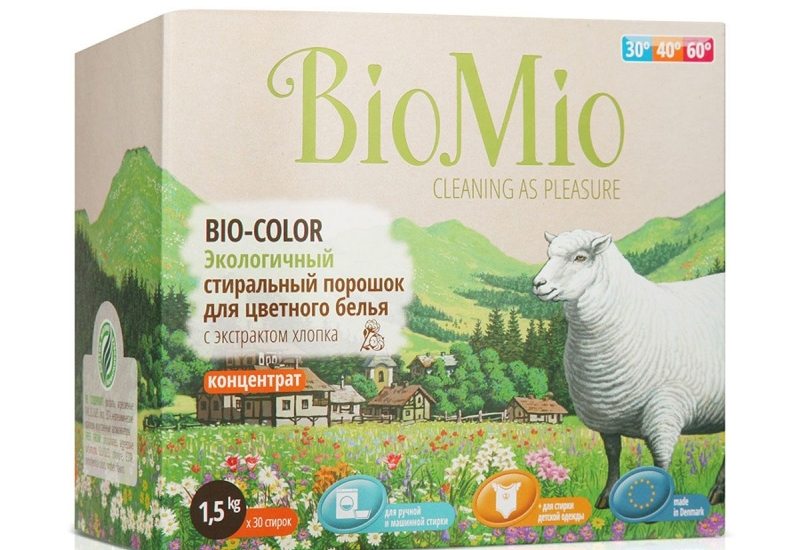
Klar Eco Sensitiv is another German-made powder. The main components of this powder are: soap nut, vegetable oil soap, oxygen-containing bleach, cyolites, salt, soda, citric acid, sugar surfactants, rice starch, sodium silica, a substance that enhances the effect of bleach. The powder is suitable not only for white, but also for well-dyed laundry. The operating temperature of the powder is from 30 to 95 degrees. The powder is environmentally friendly, which is confirmed by the trademark Veran, approved by the Allergy and Asthma Association. A 1.375 kg package costs about $10.
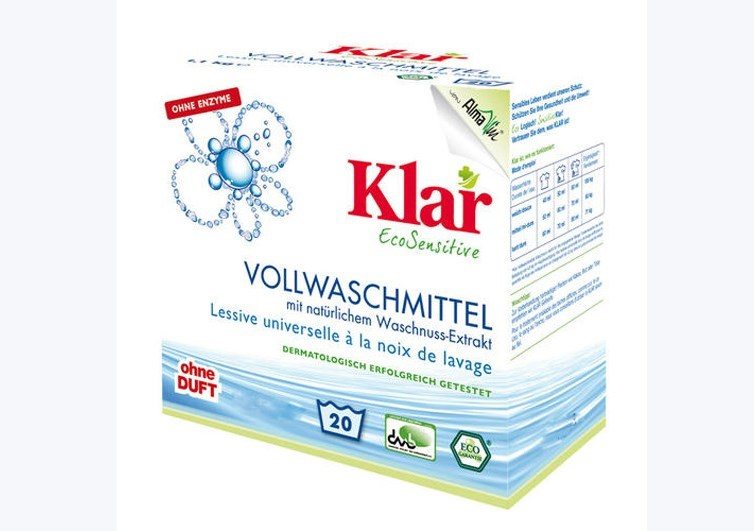
Ecover Zero is a phosphate-free washing powder made in Belgium. It contains biosurfactants, soap, zeolites, polypeptide, sodium bicarbonate, sodium sulfate. Simply put, there are no banned chemicals in it. This product can be used for both hand and machine washing for all types of fabrics. The powder is concentrated - used little by little. A 750 g package costs about $7.
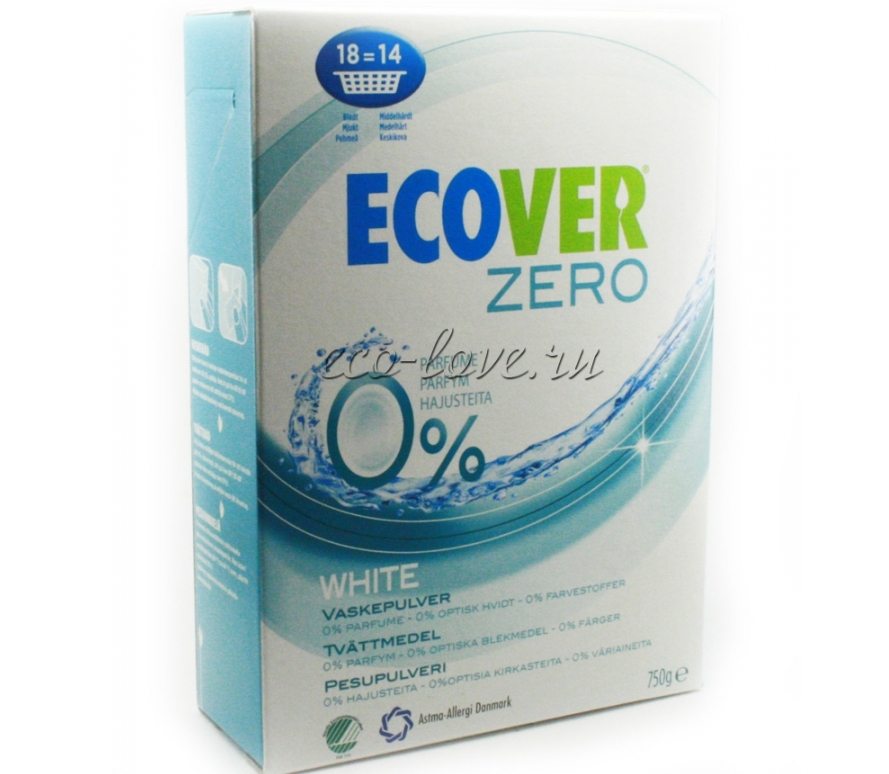
EcoDoo is a washing powder from France containing essential oils of rosemary and lavender.The main components are zeolites, surfactants, Aleppo soap, consisting of laurel fruits and olive oil, and enzymes. Operating temperature from 30 to 90 degrees, concentrated powder. The cost of 3 kg of powder is approximately $22.
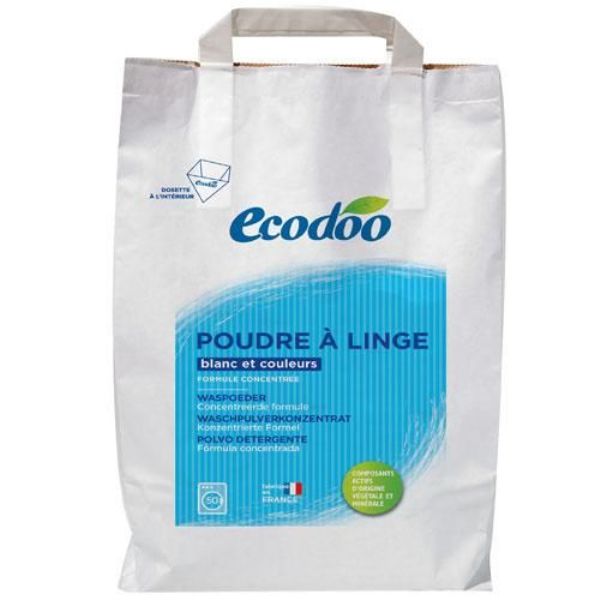
Mako Clean is an environmentally friendly washing powder produced in Russia. The product contains surfactants, enzymes, soap crumbs, defoamer, and soda ash. In appearance it is a homogeneous white powder, without a pungent odor. A 1,350 kg package costs about $7.

In addition to those listed above, powders from other manufacturers can also be considered safe; the composition of their powders is slightly different from those listed above. Here is a list of manufacturers:
- AlmaVin;
- Mi&Co;
- S.Herbals;
- Sonett;
- Nissan FaFa;
- Garden;
- Clever Free.
For your information! Phosphates are banned in some European countries, such as Austria, Germany, and the Netherlands, and are also banned in Japan and South Korea, so look for powders produced in these countries.
So, phosphate-free laundry detergents are classified as environmentally friendly, but some of them can be no less dangerous if they contain European phosphate substitutes - zeolites. It will not be possible to completely eliminate chemicals from the powder; for example, surfactants are present in absolutely all powders, except homemade powders. After all, then they will be ineffective. When simply washing clothes, you need to rinse them well and do not increase the dosage of powder. Wash it right!
Interesting:
Reader comments
- Share your opinion - leave a comment


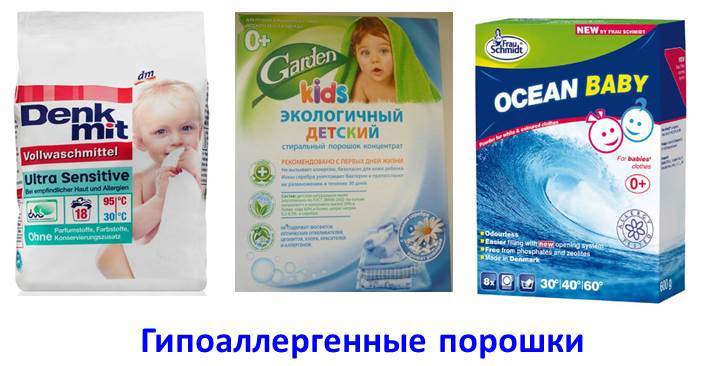
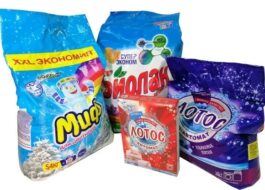
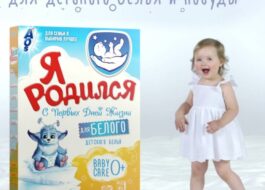
















Add a comment